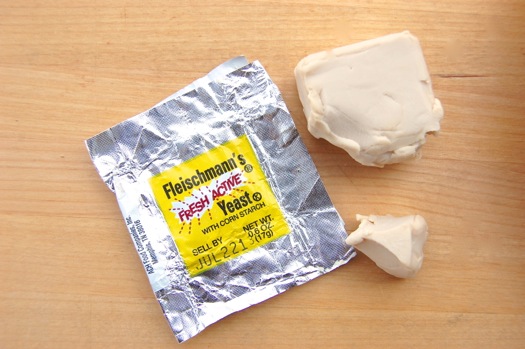Active Dry Yeast

Active dry yeast undergoes a few more processing steps than compressed yeast. After the live yeast is spun out of the fermentation vat and a good deal of the water is removed, it’s mixed with a small amount of oil and extruded in extremely thin little ribbons. Those ribbons are cut up into granules, then the granules are tossed in a powder of some, shall we say, “detritus”…dead yeast cells mostly, to give them a protective coat. At that point they’re fully dried, packed and shipped.
READ ON